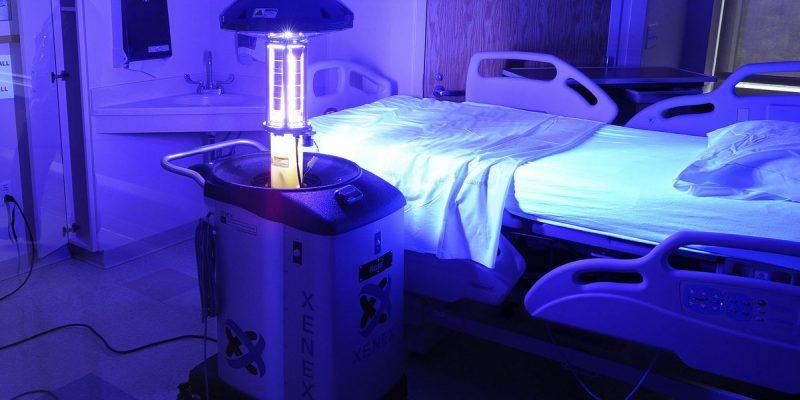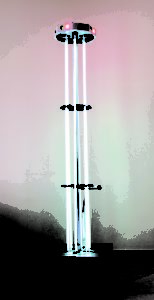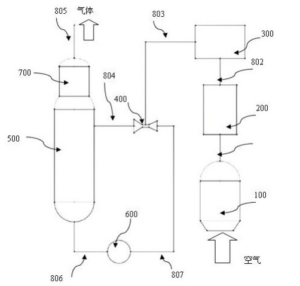
Ultraviolet Sterilization Technique warrior against Covid-19
UV sterilization or Ultraviolet germicidal irradiation (UVGI) is a sanitization method that utilizes shorter or more energetic wavelength ultraviolet (UVC) to kill or inactivate microorganisms so that they could not perform the vital cellular functions. Since 1878, artificially produced UVC has been an effective method of sterilization commonly used in hospitals, airplanes, factories, and offices. Significantly, it is also used in food, water, and air purification.
UV light is a type of light that is invisible to the human eye. It is emitted by the Sun; however, most UV rays don’t reach us because the Earth’s ozone layer absorbs them. The novel attribute of UV rays is that a particular range of its wavelengths, those between 200-300 nanometers (UVC rays), are classified as germicidal-which means that they are efficient in killing or inactivating microorganisms like viruses, bacteria, protozoa, and other pathogens. It is because of this ability that today UV sterilization has been worldwide adopted as a chemical-free, environment friendly and highly efficacious measure to fight against harmful microorganisms.
Unlike the chemical process, the UV sterilization process is an extremely quick physical process. It tends to mutate or degrade the DNA of the microorganism. When DNA is damaged, the microorganism is unable to generate instructions and reproduce. Hence, it cannot further cause infection, and eventually, it dies. UV light has shown efficiency in fighting against the pathogenic organisms that causes numerous diseases such as cholera, polio, typhoid, hepatitis, and other bacterial, virus, or parasitic diseases. Moreover, UV light can also destroy chemical contaminants, for example, pesticides, industrial solvents, and pharmaceuticals through a procedure called UV-oxidation.
Advantages of UV Sterilization: Scientific researches in the field of sanitization or sterilization has proven UV light’s ability to eliminate the extensive list of pathogenic organisms efficiently. It is advantageous over chemical disinfection processes such as chlorine-based disinfection process that is hazardous to human health. It is highly economical and can be easily installed. The UV light has no odor or taste and it doesn’t have pH conductivity as well, therefore, if it is used for the purification of water; it can neither react with water nor can eliminate its essential minerals. It is also very operator friendly. The UV disinfectant plant comes with immediate treatment processes with no requirement of holding tanks, long retention times, etc. It is easy to maintain and environmentally friendly with a low initial capital cost.
Effectiveness of UV in Covid-19: The current worldwide Coronavirus pandemic is of dire worry with its high transmission rate and fast spread all through the world. The novel corona virus is strengthening its roots day by day upon the world and hand-sanitizers, disinfectants, etc., are becoming an integral part of our day to day life. In the attempt to fight against the COVID-19, which has crossed the bar of 2.5 million deaths worldwide, people are taking stringent precautions to keep themselves from catching the disease like disinfecting the commonly touched surfaces and quarantining themselves. The use of hand sanitizers and other disinfectants have been increased to many folds. Chlorine disinfectant is been widely used to disinfect roads and public places. The recent studies disclose that the novel coronavirus can survive on the metal or wood or paper surface for around 5 days which is appalling and makes the sanitization process to be taken earnestly and faultlessly. The basic difference between a sanitizer and UV disinfectant is that sanitizers reduce the number of germs on a surface whereas disinfectants kill most of the germs. Since UV irradiation is been used to sanitize rooms and objects, disinfect water, etc. for quite a long time, therefore, it can be used in the sterilizing process in the war against COVID-19. Further, studies on the previous coronaviruses such as SARS and MERS suggest that they can be inactivated by UV radiation. Therefore, it’s not unreasonable to expect that it will have a similar effect on COVID-19. However, according to WHO human DNA can be damaged by UV radiation and can cause serious health problems like cancer or cataracts in the eye, therefore, exposing the human body to UVC light is not a good idea to eliminate COVID-19. According to a study, a particular range in the spectrum of ultraviolet light (Far-UVC) can effectively eliminate bacteria without causing harm to the mammalian skin.
In India, authorities have already started adapting the UV devices to disinfect the contaminated surfaces and areas. Below are few examples of the adaptation of the UV disinfectant technology in India: According to Delhi International Airport Limited (DIAL), “The Delhi airport is using mobile towers, handheld torch and baggage tunnels that deploy ultraviolet (UV) rays to disinfect surfaces in order to combat coronavirus”. In addition to the above, DRDO has also developed UVdisinfectant tower. A DRDO authority has said in their official statement that, “the Defence Research and Development Organisation (DRDO) has developed an ultra violet (UV) disinfection tower for rapid and chemical-free disinfection of high infection-prone areas”.

Figure represents UV Blaster by DRDO
Similar to India other countries such as USA have also started adapting this technology for fighting against Covid-19. Recently, Texas-based Xenex Disinfection Services announced a successful test of its LightStrike robot that emits UV light of wavelengths between 200 and 315 nanometres to disinfect beds, doorknobs and other surfaces.

Figure shows LightStrike robot Xenex Disinfection Services
In addition, some patents have been filed that suggest the use of ultraviolet light to fight against the novel corona virus. A patent CN111053984A suggests a device for blocking the transmission of droplets that can cause Covid-19, wherein the device includes a UV Lamp to sterilize and disinfect the environment. The UV Lamp kills the bacteria and viruses before diffusion.

Figure represents a device to disinfect environment
Further, another patent CN110948505A suggests a medical self-disinfection logistics robot that could be utilized by the authorities to disinfect any area. The robot uses ultraviolet light to disinfect.
We have started adapting various technologies to tackle the global pandemic situation. However, we don’t know the end of this pandemic situation. We don’t know how far we are going to walk with it. The only thing we are sure about is that we have to fight against this deadly disease. But, the question arises is how can we fight with it? The answer is by adapting different sanitizing methods. One sanitization method is never enough and when it comes to novel coronavirus that can survive on different surfaces for 4-5 days, the task becomes even tougher. UV disinfectant is an effective way to disinfect hospital rooms, malls, airports, etc. and is also an environmentally friendly method that is anyhow better than chemical sanitization. However, the use of disinfectant or any other disinfectant is not a solution for the novel corona virus, hence, we hope that scientists come up with the vaccine for COVID-19 soon so that a long war against the pandemic ends.

